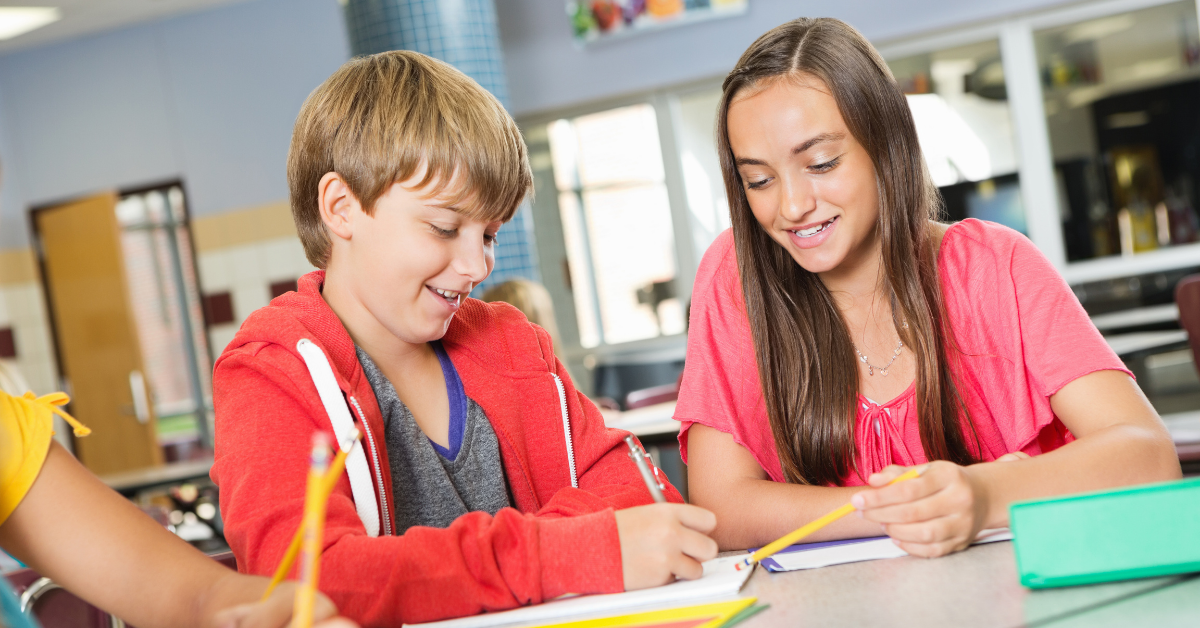
Need to Know
- Project-based learning, or PBL, is a learning process in which students access and make sense of information via inquiry, active participation, reflection, and presentation.
- A best practice approach to PBL incorporates specific design elements like inquiry, authenticity, and student voice.
- Social studies is inherently inquiry driven. PBL, which is a form of inquiry-based learning, is uniquely positioned to benefit social studies teaching and learning.
A Closer Look
Project-based learning, or PBL, is a learning process in which students access and make sense of information via inquiry, active participation, reflection, and presentation. PBL stands apart from more traditional instructional methods in that it centers student voice, choice, and collaboration as the driving mechanisms of discovery.
"PBL is the act of learning through identifying a real-world problem and developing its solution," explains Heather-Wolpert Gawron. "Kids show what they learn as they journey through the unit, not just at the end."
High-quality PBL—regardless of the topic of study—follows a structure for success. Setting the Standard for Project-Based Learning: A Proven Approach to Rigorous Classroom Instruction (ASCD 2015) refers to these "look-fors" as the seven Essential Project Design Elements. They are:
- Challenging Problem or Question
- Sustained Inquiry
- Authenticity
- Student Voice & Choice
- Reflection
- Critique & Revision
- Public Product
Why Does PBL Matter?
Project-based learning champions exploration and content understanding. And, it turns out, this model of teaching and learning also fuels student performance and engagement. "Studies show that when implemented well, PBL increases long-term retention of content and helps students perform as well as or better than traditional learners in high-stakes tests,” writes Vanessa Vega for Edutopia. It also “improves problem-solving and collaboration skills, and improves students' attitudes toward learning." (Vega, 2021)
More recently, the Lucas Research Foundation released six separate 2021 studies that link project-based learning to gains in students' overall academic performance and socio-emotional development. The reports shine a particular light on PBL's "positive effects on student outcomes in social studies, science, and language and literacy" (De Vivo, 2021).
Project-Based Learning and Social Studies: A Natural Fit
PBL is a natural fit for social studies instruction. That's, in part, because, at its core, social studies is inherently inquiry-driven. It invites us to ask critical questions about how we, as humans, experience the world around us (including the people who lived or are living within it). "Inquiry is an intellectual process used by social scientists to address authentic issues," says the Minnesota Center for Social Studies Education. "Inquiry-based instruction gives students practice being political scientists, economists, geographers, and historians."
We can think of PBL as one "face" of inquiry. In other words, it's one of the many different forms that inquiry-based learning can take. Project-centered social studies instruction can open doors for youth to explore intersocial curiosities, solve real-world challenges, and better understand their own (and others’) lived experiences.
"Project-based learning creates an environment where students have agency in their learning—acquiring knowledge and engaging in projects fueled by their own interests," explains Educurious, a project-based curriculum that energizes students with ideas that matter. Effectively implemented PBL, says Educurious, "inspires students to gain content knowledge in core subjects, while also building skills like communication, collaboration, problem-solving, critical thinking, and creativity."
Combining student agency and interest enhances the relevance of social studies lessons. It can also point youth toward ideas, tools, and resources that they can use to drive real change in areas that affect them or their communities. Today's students are often required to think critically and engage in meaningful social and civic conversations. Meanwhile, in our classrooms, we're having more authentic talks with students about things that directly impact their lived experiences, like racial and economic inequities. PBL creates a bridge—a way to effectively move from talking and thinking to actively doing.
What Does it Look Like in Practice?
Best-practice PBL is rooted in the seven Essential Project Design Elements. To illustrate what this might look like in action, let's return to Educurious.
Each hands-on, project-based Educurious journey begins with a driving question that embodies the big idea of the project and sparks engagement. Next, students lean deeper into the question via scaffolded instruction, peer collaboration, and relevant connections to their lives. Then, they put their knowledge and reflective processes to work to define and design their project. Finally, learners fine-tune their projects in response to the driving question, demonstrate what they've learned, and provide supporting evidence.
When students' discovery and invested personal effort culminates into a meaningful project, the results can be transformative. "Creation feeds a love of learning," Educurious reminds us. "[Youth] share their findings with their classroom, school, parent, and expert mentors, as well as over social media and even in the local news. Students celebrate, ready for their next learning challenge. Ready for almost anything."


